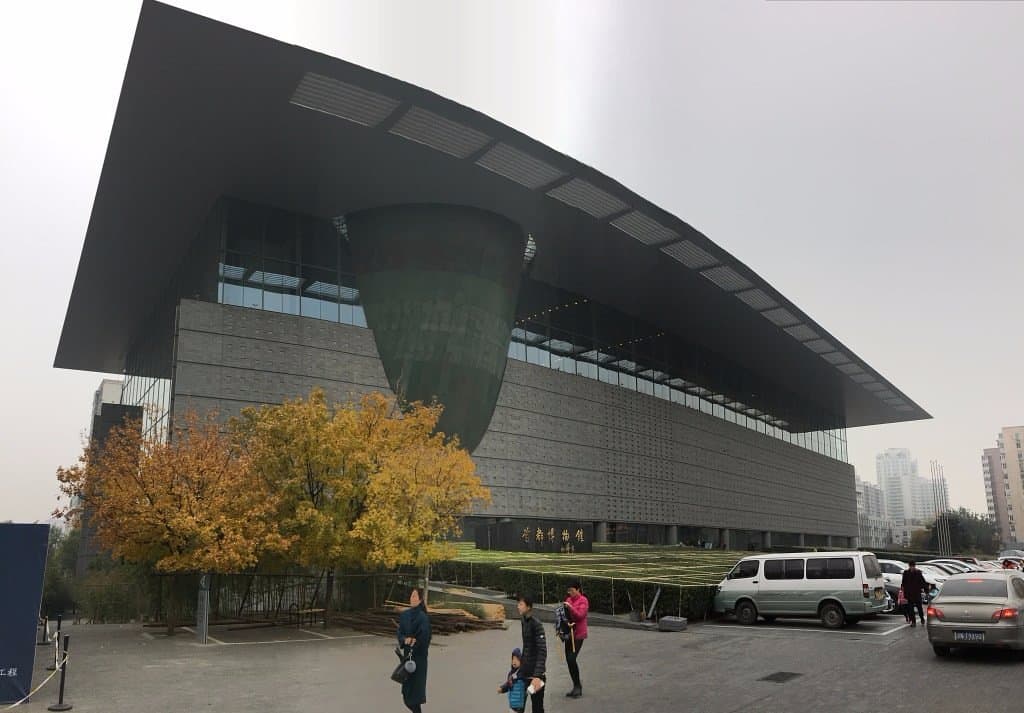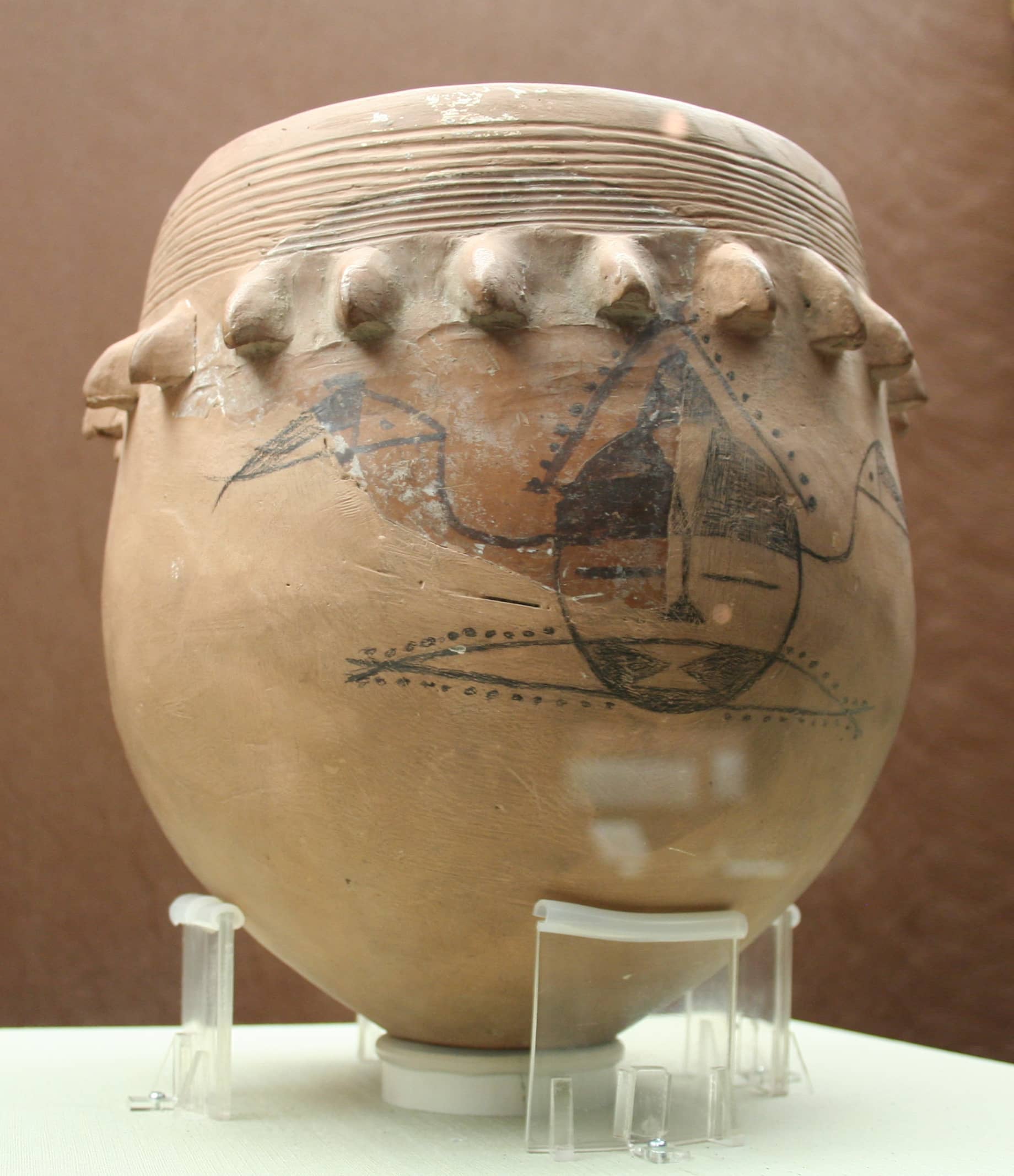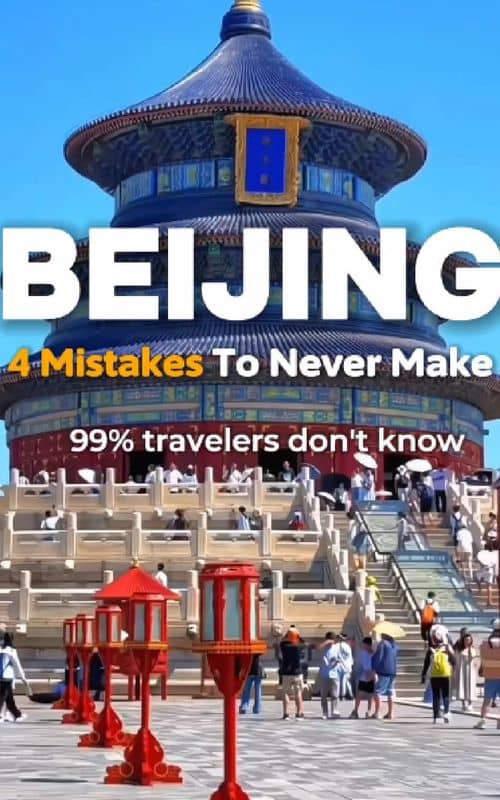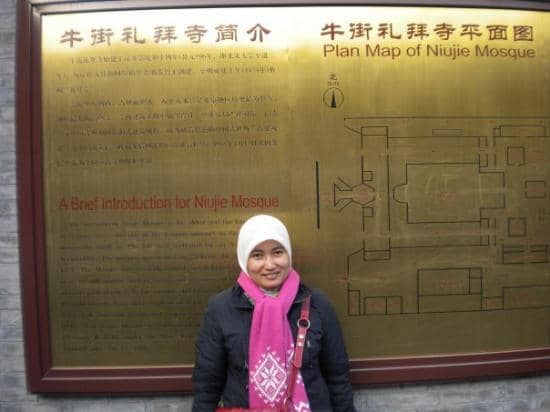
Capital Museum Beijing
Explore millennia of Chinese history and art through vast collections of porcelain, bronze, calligraphy, and more.

Highlights
Must-see attractions

Social
From TikTok & Reddit
Best Time
Fewer crowds, more peaceful viewing

Capital Museum Beijing
Best Time
Fewer crowds, more peaceful viewing

Highlights
Must-see attractions
Explore millennia of Chinese history and art through vast collections of porcelain, bronze, calligraphy, and more.
"A must-visit for understanding China's rich artistic heritage and imperial past."

🎟️ Book Tickets in Advance
Most museums, including the Capital Museum, require advance booking. Use WeChat or other platforms.
🚶♀️ Allow Ample Time
The museum is large; dedicate at least 2-3 hours to explore its vast collections.

Highlights
Discover the most iconic attractions and experiences

Ancient Chinese Art & Artifacts
Various Galleries
Marvel at exquisite porcelain, intricate lacquerware, and ancient calligraphy that tell China's rich history.

Imperial History Exhibits
Dynastic Halls
Explore artifacts and displays detailing the lives and reigns of China's emperors and dynasties.

Special Exhibitions
Temporary Exhibition Halls
Discover rotating displays, often featuring unique cultural or artistic themes from across China.
Plans like a pro.
Thinks like you
Planning Your Visit
Book Ahead for Popular Beijing Museums
Navigating Beijing's Sprawling Attractions
Best Times
Insider Tips
from TikTok, Instagram & Reddit
🎟️ Book Tickets in Advance
Most museums, including the Capital Museum, require advance booking. Use WeChat or other platforms.
🚶♀️ Allow Ample Time
The museum is large; dedicate at least 2-3 hours to explore its vast collections.
📱 Download WeChat
Essential for booking tickets and navigating many services in China.
📸 Photography Rules
Check specific gallery rules; flash photography is usually prohibited.
Tips
from all over the internet
🎟️ Book Tickets in Advance
Most museums, including the Capital Museum, require advance booking. Use WeChat or other platforms.
🚶♀️ Allow Ample Time
The museum is large; dedicate at least 2-3 hours to explore its vast collections.
📱 Download WeChat
Essential for booking tickets and navigating many services in China.
📸 Photography Rules
Check specific gallery rules; flash photography is usually prohibited.
📍 Check Location
It's a large city; confirm the museum's exact location before heading out.
What Travellers Say
Reviews Summary
Visitors praise the Capital Museum for its extensive and well-presented collections of ancient Chinese art and artifacts, offering a deep dive into the nation's rich history. The museum's architecture is also noted as impressive. However, some find the booking process can be a bit complex, and it's essential to plan ahead to secure entry.
"The Capital Museum tells the history of Beijing from the past to the present. Especially the central axis of Beijing and the daily life of its residents."
Thotsaporn Jaroensri
"The Capital Museum (Chinese: 首都博物馆) in Beijing, China, is a premier art museum. Established in 1981, the museum relocated to its current facility in 2006. This expansive building houses an impressive collection of ancient porcelain, bronze, calligraphy, painting, jade, sculpture, and Buddhist statues from imperial China and other Asian cultures. Initially, the museum's collection comprised 83,000 objects. Although it attracts fewer visitors than other prominent art institutions in Beijing, such as the Palace Museum in the Forbidden City, the National Museum of China, and the National Art Museum of China, it remains a leading cultural institution. Today, its collection boasts over 200,000 cultural relics. Only a small fraction is exhibited, with a significant percentage comprising artifacts unearthed in Beijing. The Capital Museum's striking architecture, led by Jean-Marie Duthilleul and Cui Kai, draws inspiration from ancient Chinese design. The stone exterior symbolizes the city walls and towers of ancient China. A danbi stone, embedded at the north entrance, features intricate carvings of dragons, phoenixes, and imperial artifacts. The reception hall showcases a decorative Ming Dynasty archway, highlighting the ancient architecture.
The museum boasts proximity to subway and public transport, with complimentary admission for all.
(Take the Line 1 subway from Tiananmen West station to Muxidi station (8 mins ride).
A full day can be devoted to exploring the sophisticated art collections and artifacts on display. Regrettably, I was unable to complete my exploration of the museum few years ago due to other commitments; however, I intend to fulfill the tour at a future date."
C Khan
"Lots of cool exhibits and historical information on the capital. Wish there were more signs in English. Free entry!"
Ben R
What People Like
What People Dislike
Frequently Asked Questions
🚇 🗺️ Getting There
The Capital Museum is accessible via Beijing's subway system. Take Line 1 or Line 9 to Military Museum Station, then it's a short walk. Taxis and ride-sharing apps are also readily available.
While not directly adjacent to all major sites, it's relatively well-connected. It's a good option to combine with visits to the Military Museum or other central Beijing locations.
The subway is efficient and cost-effective for most attractions. For longer distances or convenience, consider taxis or ride-sharing apps, but be aware of potential traffic.
Yes, avoid entering the Forbidden City through Tiananmen Square during peak times as it can be very crowded. Consider alternative entrances or times.
Beijing is a large city, and travel times can vary significantly due to traffic. Factor in at least 30-60 minutes for travel between major sites, more during peak hours.
🎫 🎫 Tickets & Entry
Yes, advance booking is generally required for the Capital Museum. Visitors often use WeChat to reserve their entry slots.
While many museums in Beijing are free, the Capital Museum often requires a pre-booked ticket, even if it's free of charge. Always check the official booking channels.
Tickets are typically booked through the museum's official WeChat account or designated booking platforms. Trip.com is also mentioned as a resource for booking various attractions.
Opening hours can vary, but it's generally open from Tuesday to Sunday. It's crucial to check the official website or booking platform for the most up-to-date hours and any specific closing days.
It is highly recommended to book tickets in advance, as on-the-spot purchases may not be available or could involve long waits.
🎫 🏛️ Onsite Experience
Highlights include the extensive collections of ancient Chinese porcelain, bronze wares, calligraphy, and paintings. Don't miss the displays on Beijing's history and urban development.
Yes, the museum offers a wealth of historical and cultural exhibits that can be educational and engaging for children, though some displays may be more suited for older kids.
Photography is generally allowed in most areas, but flash photography is usually prohibited to protect the artifacts. Always look for signage indicating specific restrictions.
To fully appreciate the collections, plan for at least 2-3 hours. If you want a more in-depth exploration, you could easily spend half a day.
Information on guided tours can be found on the museum's official website or at the information desk upon arrival. Availability may vary.
🍽️ 🍽️ Food & Dining
The museum typically has a cafe or restaurant offering light snacks and meals. For a wider variety of dining experiences, explore the surrounding areas.
The area around the museum offers a range of dining options, from local Beijing cuisine to international fare. You can find everything from street food stalls to more formal restaurants.
Eating near the museum is convenient, but exploring other districts like Wangfujing or Houhai can offer more diverse and authentic culinary experiences.
📸 📸 Photography
Capture the stunning architecture of the museum itself, as well as the intricate details of the ancient artifacts, especially the porcelain and lacquerware.
Yes, flash photography is generally not permitted to preserve the exhibits. Some special exhibition areas might have additional restrictions.
A versatile camera with good low-light performance is ideal. A wide-angle lens can be useful for capturing the museum's architecture, and a macro lens can highlight artifact details.
For Different Travelers
Tailored advice for your travel style
👨👩👧 Families with Kids
To make the visit smoother, consider focusing on specific galleries that might appeal most to your children, rather than trying to see everything. Interactive elements, if available, are always a plus. Remember to check the museum's policies on strollers and snacks. Planning your visit during less crowded times, like weekday mornings, can also help maintain a more relaxed atmosphere for the whole family.
🏛️ History Buffs & Art Enthusiasts
Pay close attention to the exhibits detailing Beijing's own history, offering context to the imperial grandeur and urban development of the capital. The museum's layout often guides visitors through chronological periods, allowing for a structured exploration of dynastic China. Don't miss the opportunity to delve into the specific craftsmanship techniques and cultural significance behind each artifact.
Deep Dives
In-depth insights and expert knowledge
Navigating Beijing's Museum Scene
To avoid disappointment, it's crucial to plan your museum visits well in advance. Platforms like WeChat are frequently used for booking, and services like Trip.com can sometimes assist with securing tickets. Understanding the booking requirements for each museum is key to a smooth experience. For instance, while some museums might be free, they still necessitate a reservation. This proactive approach ensures you can access the sites you're most interested in without facing sold-out signs.
When planning your itinerary, consider the geographical spread of these attractions. Beijing is a vast city, and travel time between museums can be significant. Grouping nearby museums, such as the Capital Museum and the Military Museum, can save considerable time and energy. Embracing the efficient subway system is often the most practical way to navigate between these cultural hubs, making your exploration of Beijing's rich museum landscape both feasible and enjoyable.
The Art of Ancient Chinese Craftsmanship
Beyond ceramics, the museum features stunning lacquerware, often adorned with intricate carvings and vibrant colors. These pieces, dating back to various dynasties, highlight the meticulous skill and artistic vision of ancient artisans. You'll also find impressive collections of bronze wares, calligraphy, and paintings, each offering insights into the aesthetic sensibilities and cultural values of different historical periods.
Experiencing these artifacts firsthand provides a tangible connection to China's rich artistic heritage. The sheer detail and artistry involved in creating these objects, often without modern tools, are truly awe-inspiring. It’s a journey through time, appreciating the enduring legacy of Chinese art and its profound cultural significance.






Social
from TikTok, Instagram & Reddit